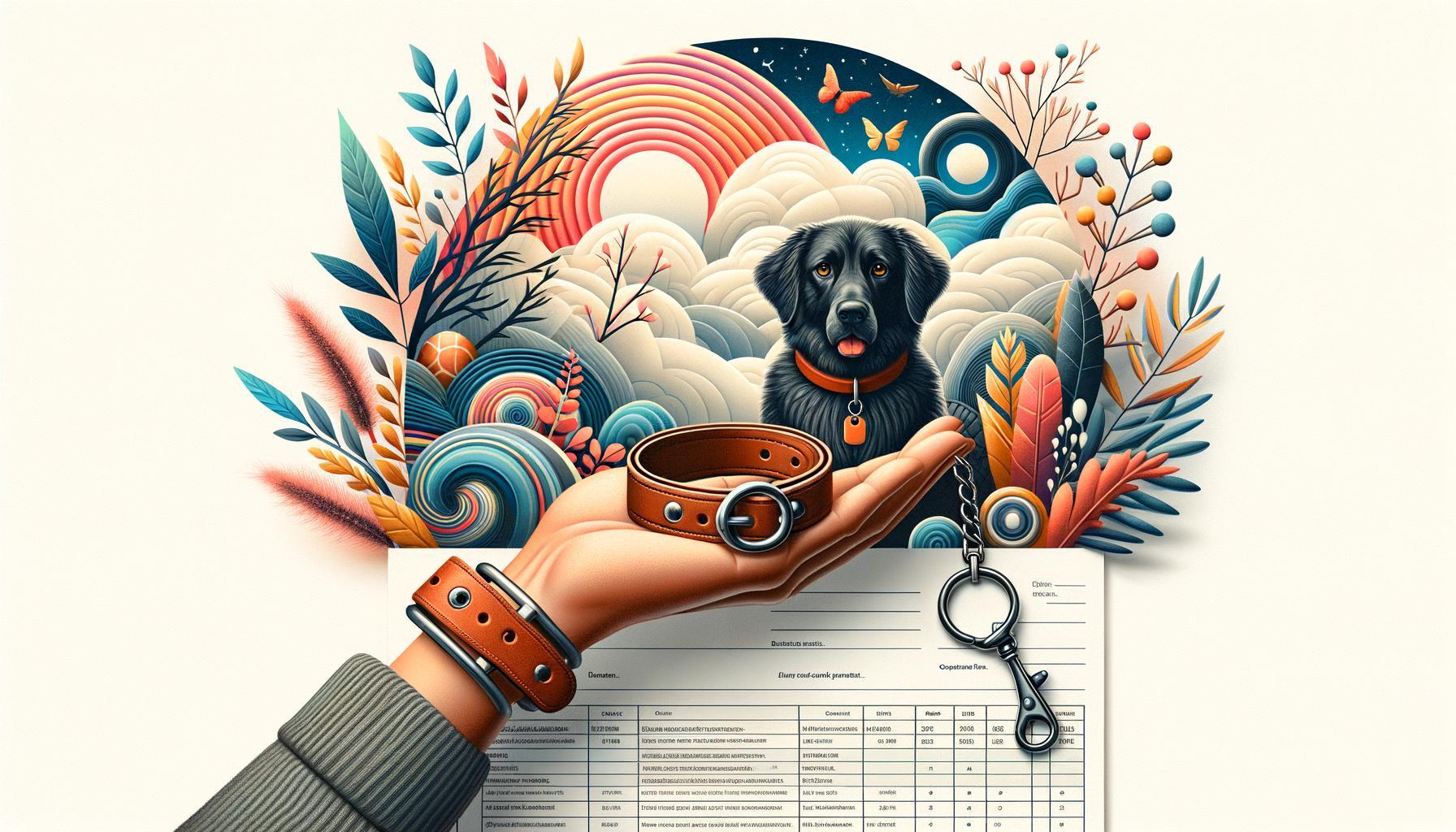In the golden years of life, companionship takes on a new, profound meaning. For many seniors, isolation and loneliness can unexpectedly creep into their lives, creating a void where joy and connection once thrived. Enter the world of emotional support animals (ESAs)—tail-wagging allies and purring confidants bringing light into the twilight years. Beyond mere pets, these golden companions offer solace, comfort, and a renewed sense of purpose. This article delves into the heartwarming realm of ESAs, uncovering the myriad ways they enrich the lives of seniors, tracing stories of comfort, joy, and unspoken friendship. Join us as we explore how these cherished animals transform the elder experience, one paw print at a time.
Table of Contents
- The Heartwarming Bond Between Seniors and Their ESAs
- Choosing the Right Emotional Support Animal for Your Needs
- Training Tips for Harmonious Living with Your Furry Friend
- Health Benefits: More Than Just Companionship
- Navigating Legal Considerations and Housing Policies
- Enhancing Daily Life: Engaging Activities with Your ESA
- In Retrospect
The Heartwarming Bond Between Seniors and Their ESAs
In the golden years, companionship becomes increasingly valuable, and emotional support animals (ESAs) step in as heartwarming allies. Many seniors discover that their bond with ESAs brings unparalleled joy and a sense of purpose. These loyal animals provide consistent emotional reinforcement, helping to alleviate feelings of loneliness and anxiety. The presence of an ESA can boost mental health and overall well-being, transforming the daily lives of their senior companions.
ESAs also encourage routine and physical activity, which are crucial for maintaining health in later years. From gentle walks in the park to playtime at home, these furry friends incentivize seniors to remain active and engaged. Additionally, the unconditional love and acceptance offered by ESAs can be particularly empowering for elderly individuals who may struggle with self-worth or social connections. The unique connection formed with these animals often leads to a fulfilling and mutually beneficial relationship, characterized by love, care, and support.
| Benefit | Impact |
|---|---|
| Improved Mental Health | Reduces anxiety and depression |
| Physical Activity | Encourages daily exercise |
| Social Connections | Helps build social interactions |
- Emotional support: constant companionship and love
- Routine: encourages a healthy daily structure
- Empowerment: boosts confidence and self-worth
Choosing the Right Emotional Support Animal for Your Needs
When selecting an Emotional Support Animal (ESA) for seniors, consider the individual’s lifestyle, physical abilities, and personal preferences. Dogs and cats are popular choices due to their affectionate nature and ability to form deep bonds with their owners. Seniors with more active lifestyles might appreciate the companionship of a medium-sized dog, while those who prefer a quieter household may enjoy the calm presence of a gentle cat. Birds, rabbits, and even miniature horses can also offer emotional support and companionship. It’s important to match the energy level of the animal with the senior’s activity level to ensure a harmonious and beneficial relationship.
Potential challenges and the daily care requirements of each type of animal should also be taken into account. Below is a brief comparison to help in making an informed decision:
| Animal | Pros | Cons |
|---|---|---|
| Dogs |
|
|
| Cats |
|
|
| Birds |
|
|
Training Tips for Harmonious Living with Your Furry Friend
Creating a harmonious environment for both you and your emotional support animal (ESA) involves thoughtful integration and understanding. **Routine is key**; ensure regular feeding, walking, and sleeping schedules to establish a sense of predictability. This not only calms your furry friend but also creates a reassuring pattern for you. **Gentle training techniques**, such as positive reinforcement, can foster good behavior without causing stress. Reward progress with treats and affectionate praise to reinforce a loving bond.
Consider setting up **designated spaces** in your home for your pet’s relaxation, feeding, and playtime. This helps maintain a tidy environment and ensures that both you and your pet have personal spaces. Here are some areas to consider:
- Sleeping Area: Comfortable bedding in a quiet corner.
- Feeding Station: Accessible spot with food and water bowls.
- Play Zone: A safe area with toys to keep them entertained.
Building a strong emotional rapport is essential. Spend quality time together, engage in activities that you both enjoy, and respect their need for downtime. A well-adjusted ESA can significantly enhance the emotional well-being and quality of life for seniors.
Health Benefits: More Than Just Companionship
Loving and loyal, emotional support animals offer a wealth of health benefits for seniors beyond mere companionship. They help alleviate feelings of loneliness and isolation, which is crucial as social circles tend to shrink with age. Studies indicate that having a pet can reduce levels of **cortisol**, a stress hormone, and boost production of serotonin, a feel-good neurotransmitter. This biochemical exchange goes a long way in keeping emotional and mental states steady. Additionally, the routine of caring for an animal instills a sense of purpose and structure in daily life, which can significantly improve overall well-being and provide a daily dose of joy and fulfillment.
The physical perks are just as compelling. Engaging in activities like walking or playing with a pet encourages more physical movement, which is vital for joint health and cardiovascular fitness. For seniors with conditions like arthritis, gentle exercise can be especially beneficial. Moreover, the tactile experience of petting an animal can lower heart rate and blood pressure, contributing to a calmer and more relaxed state of mind. Here are some key health benefits:
- Reduces stress and anxiety
- Lowers blood pressure
- Improves cardiovascular health
- Promotes physical activity
- Enhances mood and emotional stability
| Benefit | Details |
|---|---|
| Lower Blood Pressure | Petting animals induces a calming effect. |
| Increased Physical Activity | Daily walks and playtime boost mobility. |
| Mental Health Support | Boosts serotonin and reduces cortisol levels. |
Navigating Legal Considerations and Housing Policies
For seniors seeking the companionship of an emotional support animal, it’s essential to understand the various **legal considerations** and **housing policies** that can affect their ability to welcome a furry friend into their home. The Fair Housing Act (FHA) mandates that landlords provide reasonable accommodations for emotional support animals, even in properties with a strict “no pets” policy. Yet, this doesn’t mean there’s a blanket right; seniors must secure a legitimate letter from a licensed mental health professional. It’s also important to note that these accommodations don’t extend to public spaces outside the residence, where local laws and regulations may still apply.
Navigating these laws can be simplified by being aware of potential **landlord requirements**:
- Valid documentation from a healthcare provider
- Notification prior to moving in the animal
- Pertinent vaccination records
However, each housing provider’s understanding and application of these rules can vary. Below is a brief overview to aid understanding:
| Housing Provider | Response Time | Documentation Needed |
|---|---|---|
| Public Housing Authority | 2-4 weeks | Doctor’s letter |
| Private Landlord | Varies | Doctor’s letter + Vaccinations |
| Senior Living Community | 1-2 weeks | Doctor’s letter + Additional forms |
Enhancing Daily Life: Engaging Activities with Your ESA
One of the most wonderful advantages of having an Emotional Support Animal (ESA) is the wide array of activities that can enhance daily life, infusing joy and purpose into each day. Seniors can engage in heartwarming and stimulating activities that nurture their minds and bodies. Here are a few invigorating options:
- Morning Walks: A gentle, scenic walk in the park can brighten the day, offering fresh air and mild exercise both you and your ESA will enjoy.
- Gardening Together: Planting flowers or vegetables not only beautifies your surroundings but also provides a sense of accomplishment and peaceful camaraderie.
- Reading Sessions: Curl up with a good book while your ESA rests by your side; their mere presence can make reading time even more enjoyable.
- Pet-Friendly Crafts: Create fun, simple crafts for your ESA, such as homemade toys or personalized collars, adding a touch of creativity to your daily routine.
Structured activities can also be immensely beneficial, offering added motivation and consistency to the daily schedule. Here’s a simple table of weekly activities to consider:
| Day | Activity | Duration |
|---|---|---|
| Monday | Yoga with ESA | 30 minutes |
| Wednesday | Park Visit | 1 hour |
| Friday | Movie Night | 2 hours |
Each of these activities not only promotes physical health but also builds a deep, rewarding bond with your ESA. Whether you are exploring the outdoors or enjoying quiet moments at home, these shared experiences can bring immense joy and comfort to your everyday life.
In Retrospect
As the sun dips below the horizon, casting a warm, golden hue across the sky, so too do the paths of seniors and their emotional support animals converge, illuminating each step they take together. These golden companions—be they playful pups, serene felines, or gentle birds—serve not just as pets, but as steadfast confidants, bridging gaps of loneliness with silent, comforting presence and unconditional love.
In the intricate tapestry of senior life, these faithful friends weave threads of joy, security, and emotional well-being, transforming the twilight years into a realm of enriched experiences. As we celebrate the unique role these animals play, we are reminded that companionship transcends the spoken word, flourishing in the simple, shared moments that speak volumes to the heart.
Thus, while the narrative of aging is as varied and complex as the lives it encompasses, one truth remains resounding: sometimes, peace and solace can be found in the gentle nuzzle of a snout or the soft purr of contentment. For seniors navigating the evening chapters of their journeys, these golden companions prove that love and support transcend age, making every moment a little bit brighter and every step a little bit lighter.







Leave a Reply